A Novel Test Rig for the Basic Nonlinear Characterization of Bolted Joints
Abstract
1. Introduction
2. Rationale
3. Experimental Setup General Description and Design
4. Measurement of the Bolt Tension
4.1. Design of the Measurement System
4.2. Calibration of Strain Gauges
4.3. Correlation of the Axial Load and Torque
5. Dynamic Tests and Analysis
5.1. The Excitation and Measurement Systems
5.2. Comparisons with the Monolithic Beam
5.3. Results for Different Bolt Tensional Loads
6. Influence of the Head/Nut Contact Area
7. Conclusions
- (1)
- By comparing the dynamical characteristics of the two-beams bolted joint with that of the monolithic beam, it can be proved frictional damping induced at the interfaces between two flanges is the main source of the structural damping. Roughly speaking, the contribution of the interfaces between flanges to the modal damping ratio is not less than 2/3 of the total.
- (2)
- However, the nonlinear characteristic of the bolted monolithic beam clearly show how the dynamical characteristics of the bolted structures are also affected by the other contact areas of the joint (i.e., the interface between the head/nut and flange, or threads in contact). Thus, the influence of other contact areas of joints also needs to be considered in the study of the bolted structures.
- (3)
- As the excitation force increases, both the natural frequency and the response amplitude decrease nonlinearly, which can be explained by the nonlinear stiffness and damping caused by the contact interfaces. Micro-slip is more likely to occur at the contact interfaces as the excitation force increase, leading to more energy dissipation (i.e., damping) and lower tangential stiffness. Similar results are obtained by varying the bolt preload.
- (4)
- According to the experimental results of bolted beams with different contact areas at the head/nut, the amplitude of the structure with smaller contact interfaces is higher than that with larger interfaces under the same loading condition. The testing results further proved that the contact interfaces between the bolt head (or nut) and the flange has an important influence on the dynamic response of the structure.
Author Contributions
Funding
Institutional Review Board Statement
Informed Consent Statement
Acknowledgments
Conflicts of Interest
References
- Bograd, S.; Reuss, P.; Schmidt, A.; Gaul, L.; Mayer, M. Modeling the dynamics of mechanical joints. Mech. Syst. Signal Process. 2011, 25, 2801–2826. [Google Scholar] [CrossRef]
- Ferri, A.A. Friction Damping and Isolation Systems. J. Mech. Des. 1995, 117, 196–206. [Google Scholar] [CrossRef]
- Ungar, E.E. Energy Dissipation at Structural Joints; Mechanisms and Magnitudes; Bolt Beranek and Newman Inc.: Cambridge, MA, USA, 1964. [Google Scholar]
- Ungar, E.E.; Carbonell, J.R. On panel vibration damping due to structural joints. AIAA J. 1966, 4, 1385–1390. [Google Scholar] [CrossRef]
- Beards, C.; Williams, J. The damping of structural vibration by rotational slip in joints. J. Sound Vib. 1977, 53, 333–340. [Google Scholar] [CrossRef]
- Masuko, M.; Ito, Y.; Koizumi, T. Horizontal Stiffness and Micro-Slip on a Bolted Joint Subjected to Repeated Tangential Static Loads. Bull. JSME 1974, 17, 1494–1501. [Google Scholar] [CrossRef]
- Gaul, L.; Nackenhorst, U.; Willner, K.; Lenz, J. Nonlinear vibration damping of structures with bolted joints. In Proceedings of SPIE—International Society for Optical Engineering; SPIE International Society for Optical Engineering: Bellingham, WA, USA, 1994; pp. 875–881. [Google Scholar]
- Hanks, B.R.; Stephens, D.G. Mechanisms and scaling of damping in a practical structural joint. Shock Vib. Bull. 1967, 36, 1–8. [Google Scholar]
- Gould, H.H.; Mikić, B.B. Areas of Contact and Pressure Distribution in Bolted Joints. J. Eng. Ind. 1972, 94, 864–870. [Google Scholar] [CrossRef]
- Groper, M. Microslip and macroslip in bolted joints. Exp. Mech. 1985, 25, 171–174. [Google Scholar] [CrossRef]
- Segalman, D.J. An Initial Overview of Iwan Modeling for Mechanical Joints. Rep. Sand 2001, 811. [Google Scholar] [CrossRef]
- Segalman, D.J.; Gregory, D.L.; Starr, M.J.; Resor, B.R.; Jew, M.D.; Lauffer, J.P.; Ames, N.M. Handbook on Dynamics of Jointed Structures; Sandia National Laboratories: Albuquerque, NM, USA, 2009.
- Botto, D.; Lavella, M.; Gola, M.M. Measurement of contact parameters of flat on flat contact surfaces at high temperature. In ASME Turbo Expo 2012: Turbine Technical Conference and Exposition; American Society of Mechanical Engineers Digital Collection: New York, NY, USA, 2012; pp. 1325–1332. [Google Scholar]
- Ferrero, J.-F.; Yettou, E.M.; Barrau, J.-J.; Rivallant, S. Analysis of a dry friction problem under small displacements: Application to a bolted joint. Wear 2004, 256, 1135–1143. [Google Scholar] [CrossRef]
- Abad, J.; Franco, J.; Celorrio, R.; Lezáun, L. Design of experiments and energy dissipation analysis for a contact mechanics 3D model of frictional bolted lap joints. Adv. Eng. Softw. 2012, 45, 42–53. [Google Scholar] [CrossRef]
- Gaul, L.; Lenz, J. Nonlinear dynamics of structures assembled by bolted joints. Acta Mech. 1997, 125, 169–181. [Google Scholar] [CrossRef]
- Yanhong, M.A.; Yongfeng, W.; Cun, W.; Jie, H. Nonlinear interval analysis of rotor response with joints under uncertainties. Chin. J. Aeronaut. 2020, 33, 205–208. [Google Scholar]
- Jalali, H.; Ahmadian, H.; Mottershead, J.E. Identification of nonlinear bolted lap-joint parameters by force-state mapping. Int. J. Solids Struct. 2007, 44, 8087–8105. [Google Scholar]
- Maloney, C.; Peairs, D. Characterization of Damping in Bolted Lap Joints; Los Alamos National Lab.: Los Alamos, NM, USA, 2000.
- Cooper, S.B.; Rosatello, M.; Mathis, A.T.; Johnson, K.; Mayes, R.L. Effect of far-field structure on joint properties. In Dynamics of Coupled Structures; Springer: Cham, Switzerland, 2017; Volume 4, pp. 63–77. [Google Scholar]
- Smith, S.; Bilbao-Ludena, J.C.; Catalfamo, S.; Brake, M.R.W.; Reuß, P.; Schwingshackl, C.W. The Effects of Boundary Conditions, Measurement Techniques, and Excitation Type on Measurements of the Properties of Mechanical Joints. Conf. Proc. Soc. Exp. Mech. Ser. 2016, 1, 415–431. [Google Scholar]
- Catalfamo, S.; Smith, S.A.; Morlock, F.; Brake, M.R.W.; Zhu, W.D. Effects of experimental methods on the measurements of a nonlinear structure. In Dynamics of Coupled Structures; Springer: Cham, Switzerland, 2016; Volume 4, pp. 491–500. [Google Scholar]
- Brake, M.; Schwingshackl, C.; Reuß, P. Observations of variability and repeatability in jointed structures. Mech. Syst. Signal Process. 2019, 129, 282–307. [Google Scholar] [CrossRef]
- Deaner, B.J.; Allen, M.S.; Starr, M.J.; Segalman, D.J.; Sumali, H. Application of Viscous and Iwan Modal Damping Models to Experimental Measurements from Bolted Structures. J. Vib. Acoust. 2015, 137, 021012. [Google Scholar] [CrossRef]
- Singh, A.; Scapolan, M.; Saito, Y.; Allen, M.S.; Kuether, R.J. Experimental characterization of a new benchmark structure for prediction of damping nonlinearity. In Nonlinear Dynamics; Springer: Cham, Switzerland, 2019; Volume 1, pp. 57–78. [Google Scholar]
- Boeswald, M.; Link, M.; Meyer, S.; Weiland, M. Investigations on the non-linear behaviour of a cylindrical bolted casing joint using high level base excitation tests. In Proceedings of the ISMA: International Conference on Noise and Vibration Engineering, Leuven, Belgium, 16–17 September 2002. [Google Scholar]
- Beaudoin, M.-A.; Behdinan, K. Analytical lump model for the nonlinear dynamic response of bolted flanges in aero-engine casings. Mech. Syst. Signal Process. 2019, 115, 14–28. [Google Scholar] [CrossRef]
- Macke, H.J. Traveling-Wave Vibration of Gas-Turbine Engine Shells. J. Eng. Power 1966, 88, 179–187. [Google Scholar] [CrossRef]
- Wriggers, P. Finite element algorithms for contact problems. Arch. Comput. Methods Eng. 1995, 2, 1–49. [Google Scholar] [CrossRef]
- Kloosterman, G. Contact Methods in Finite Element Simulations. Ph.D. Thesis, Universiteit Twente, Enschede, The Netherlands, 2002. [Google Scholar]
- Fronk, M.; Eschen, K.; Starkey, K.; Kuether, R.J.; Brakeet, M. Inverse methods for characterization of contact areas in mechanical systems. In Nonlinear Dynamics; Springer: Cham, Switzerland, 2019; Volume 1, pp. 45–56. [Google Scholar]
- Klöcker, M.; Westphal, S. Investigations of friction-relevant parameters to ensure reliable bolted joints. In Matec Web of Conferences; EDP Sciences: Les Ulis, France, 2017; Volume 94, p. 04007. [Google Scholar]
- Published Torque Technical Information from Internet. Available online: http://www.markserv.co.th/torqueinfo3.php (accessed on 7 January 2021).
- Mark, H.R.; David, L.F. Parameter Estimation from Frequency Response Measurements using Rational Fraction Polynomials. In Proceedings of SPIE—The International Society for Optical Engineering; SPIE the International Society for Optical Engineering; Bellingham, WA, USA, 1982. [Google Scholar]
- Published Viscous Damping Ratios for Different Systems and Materials from the Internet Website. Available online: https://help.solidworks.com/2016/English/SolidWorks/cworks/r_viscous_damping_ratios.htm (accessed on 7 January 2021).
- Firrone, C.M.; Zucca, S. Modelling friction contacts in structural dynamics and its application to turbine bladed disks. Numer. Anal. Theory Appl. 2011, 14, 301–334. [Google Scholar]
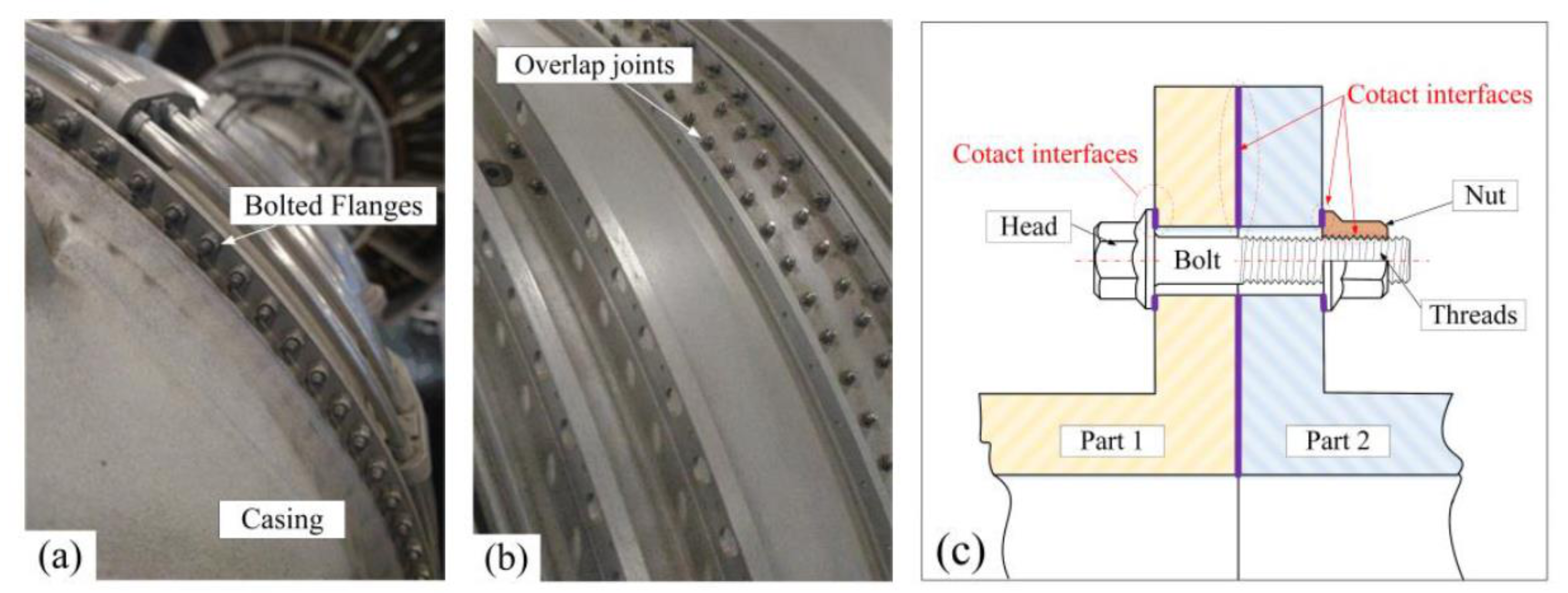
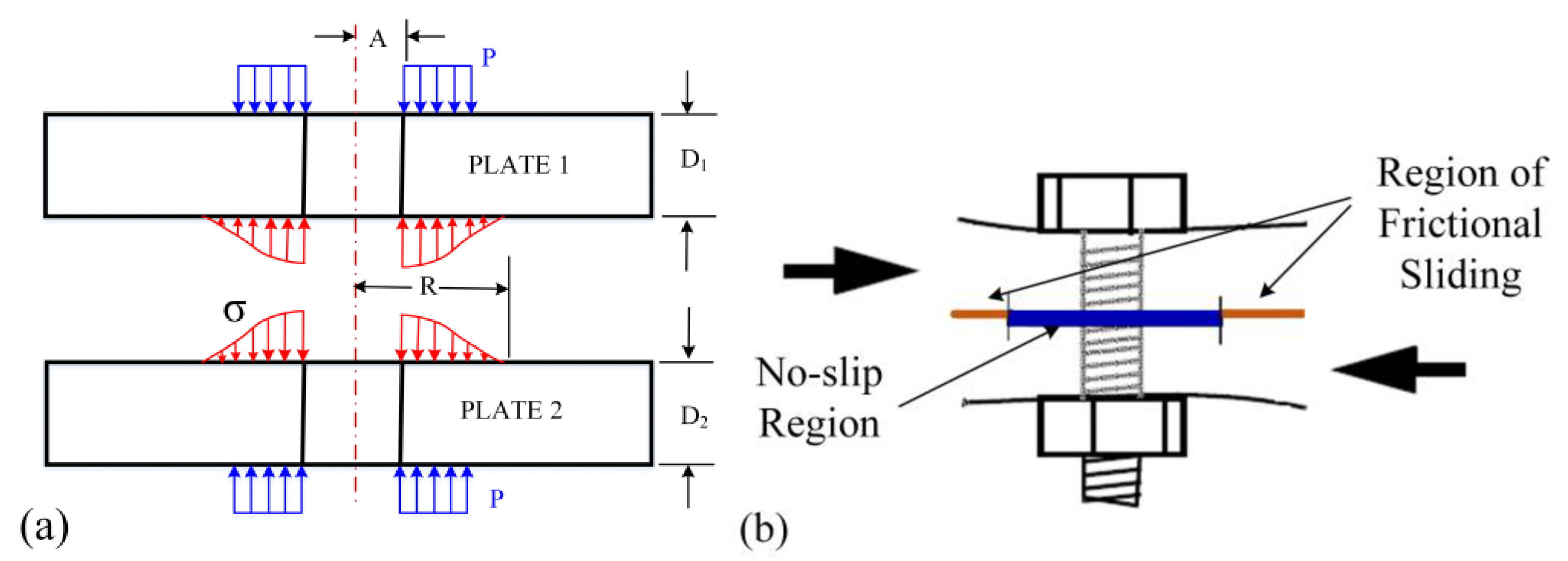





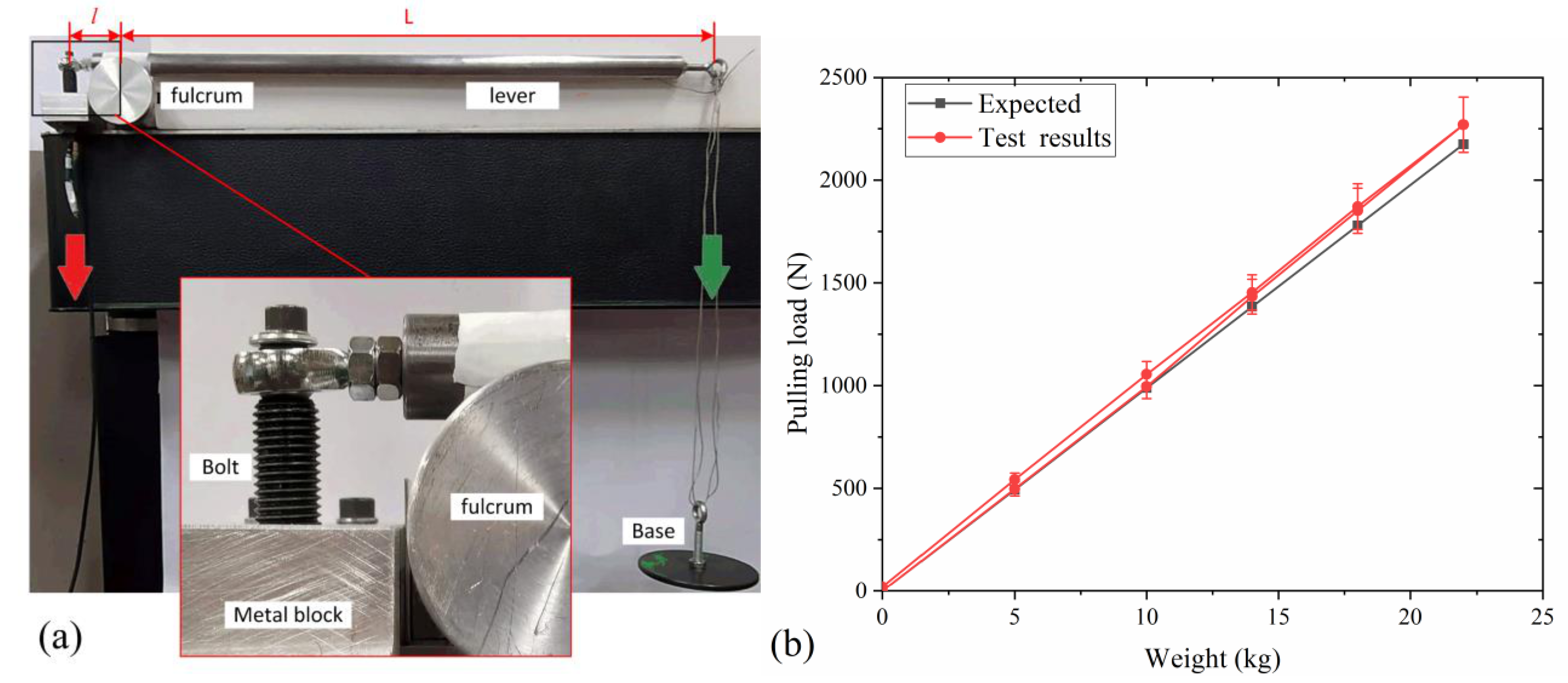
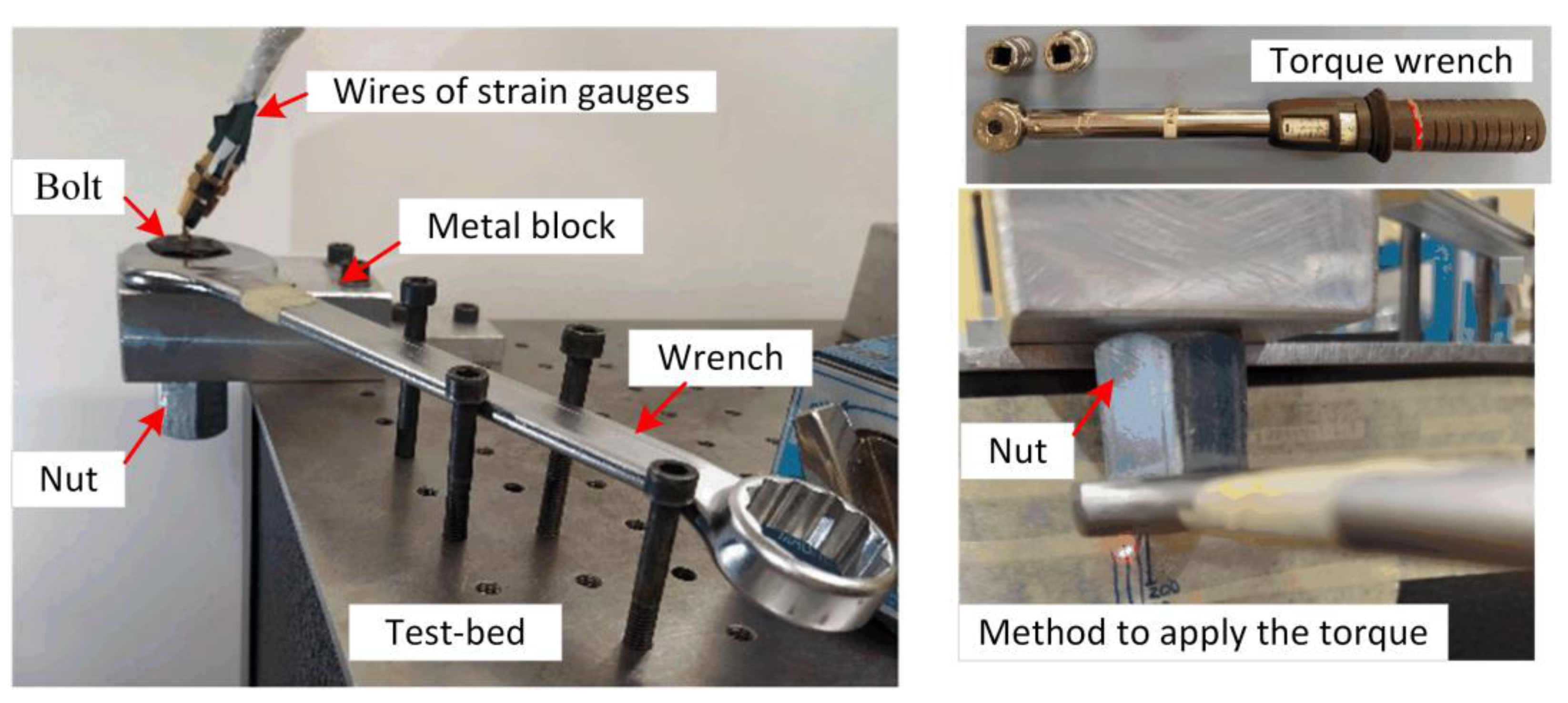
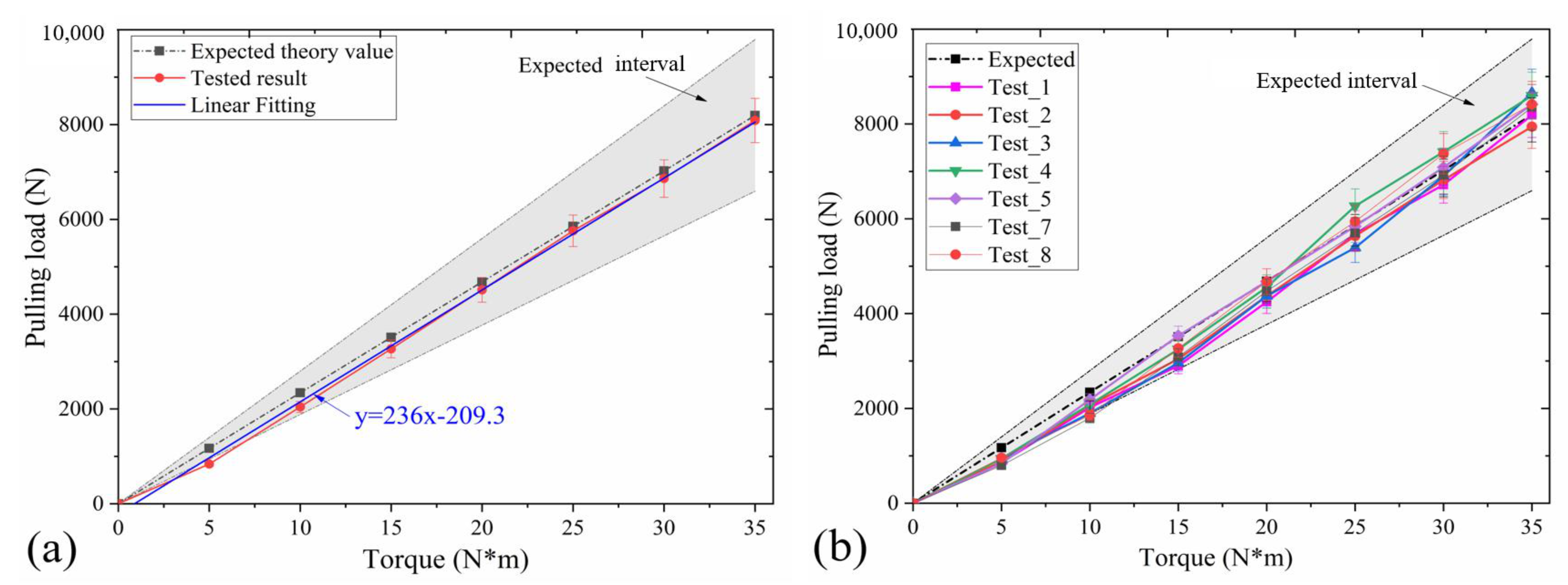
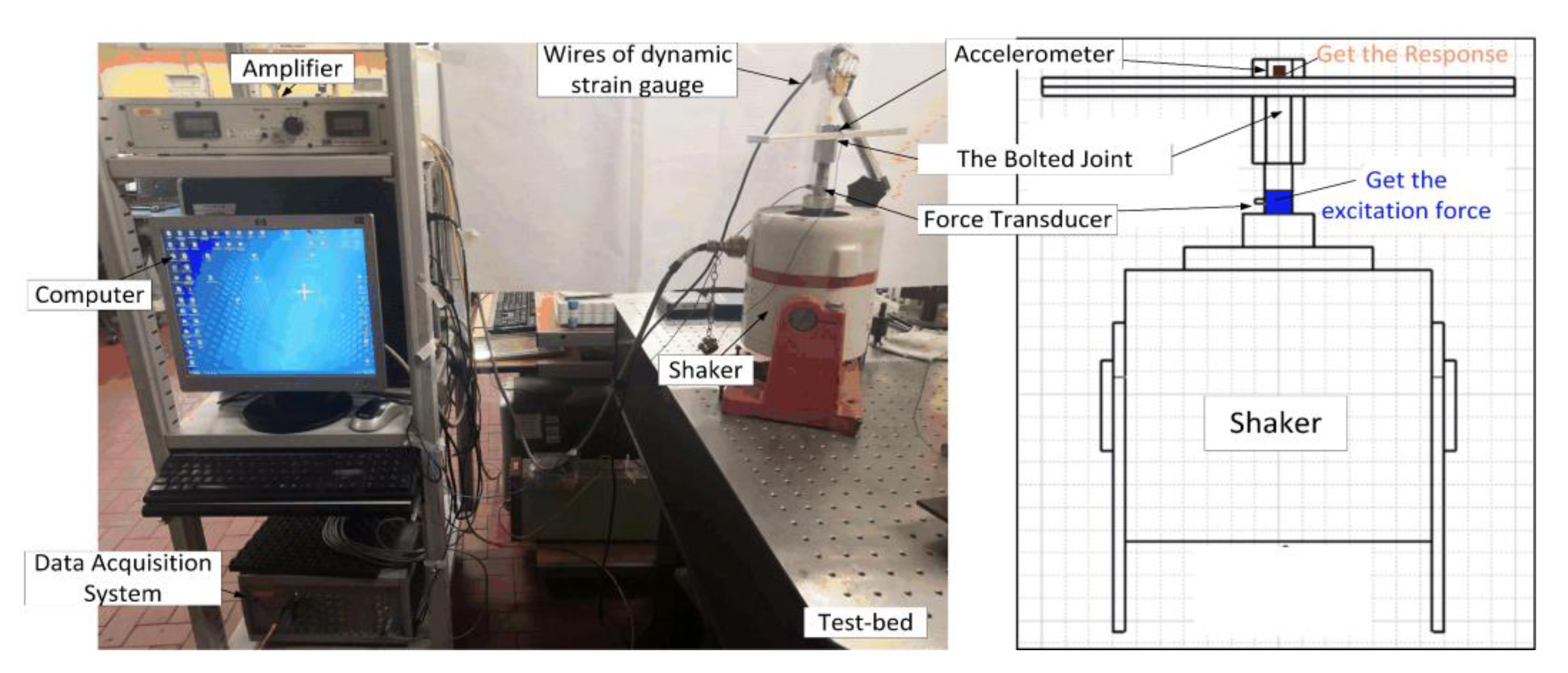
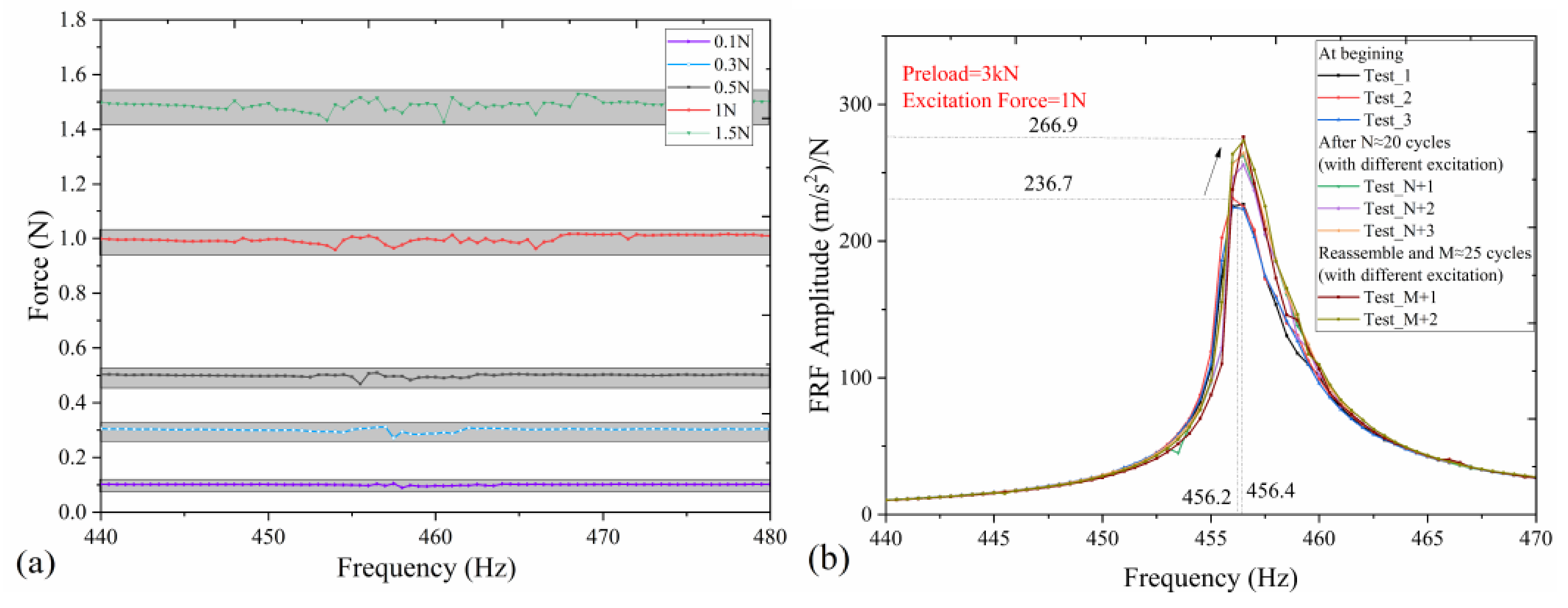

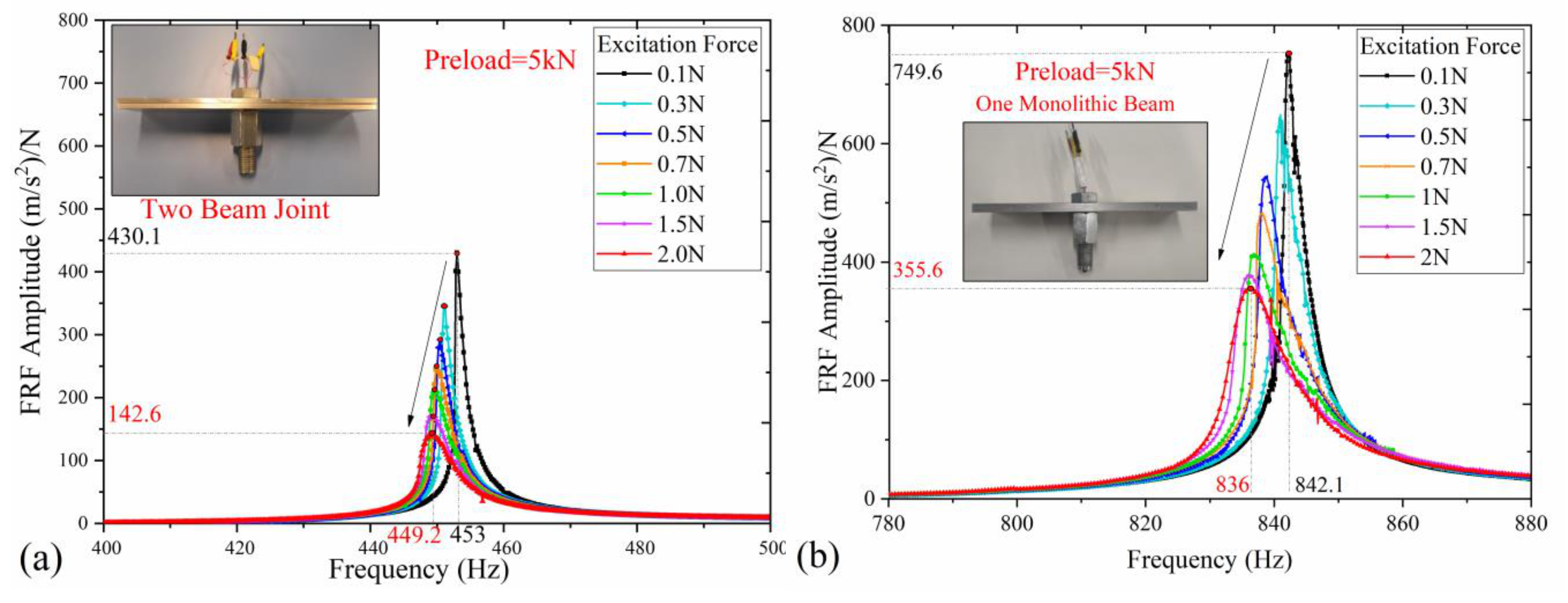
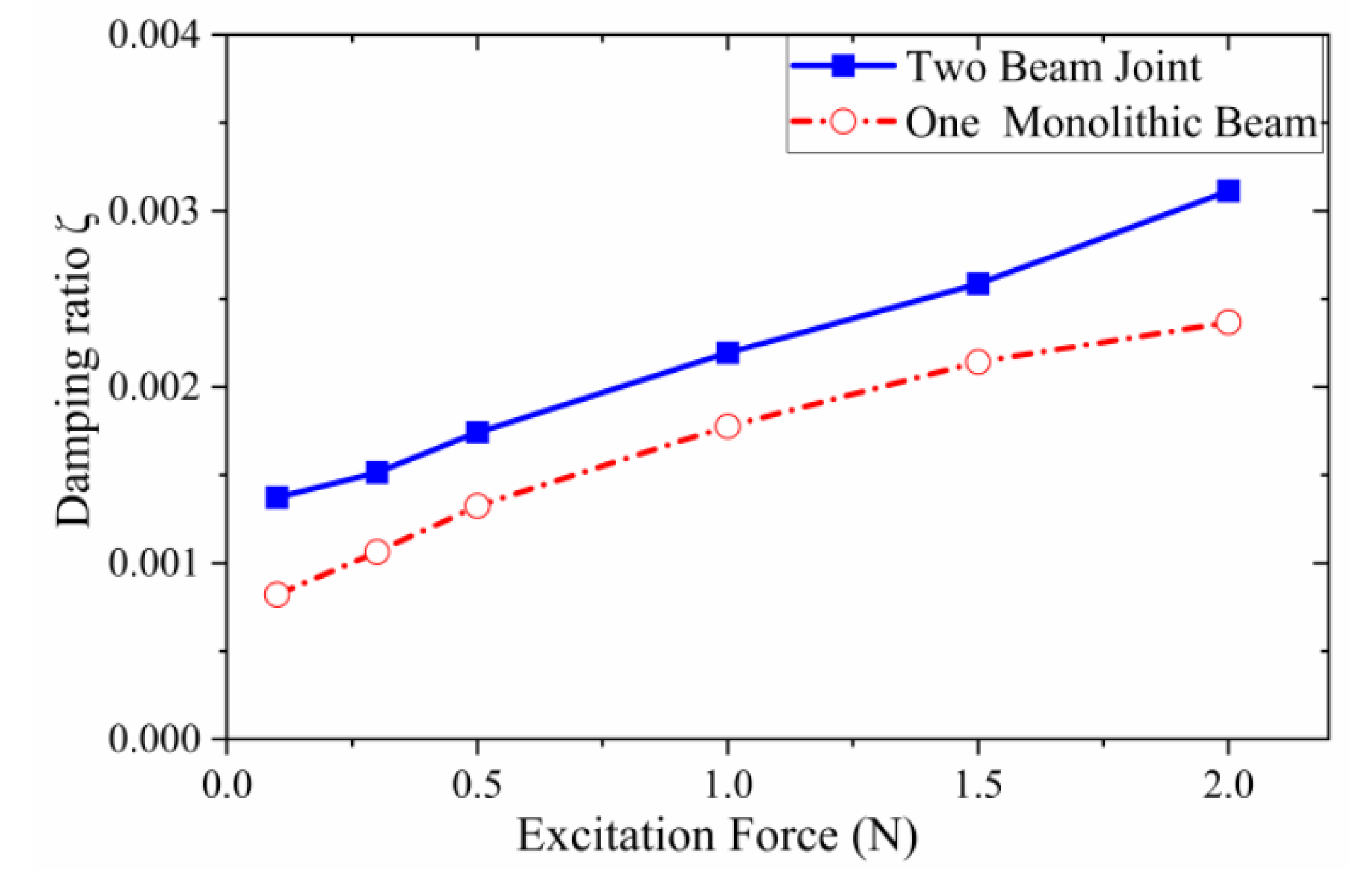
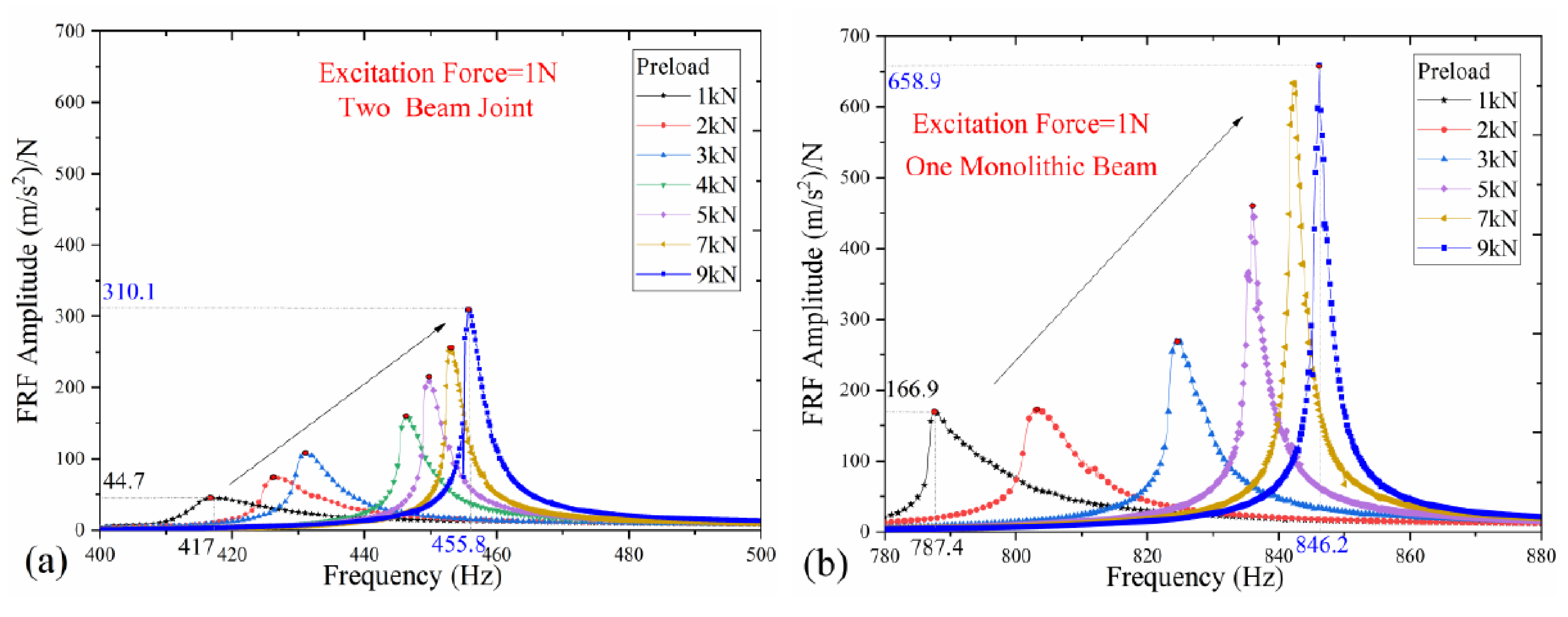


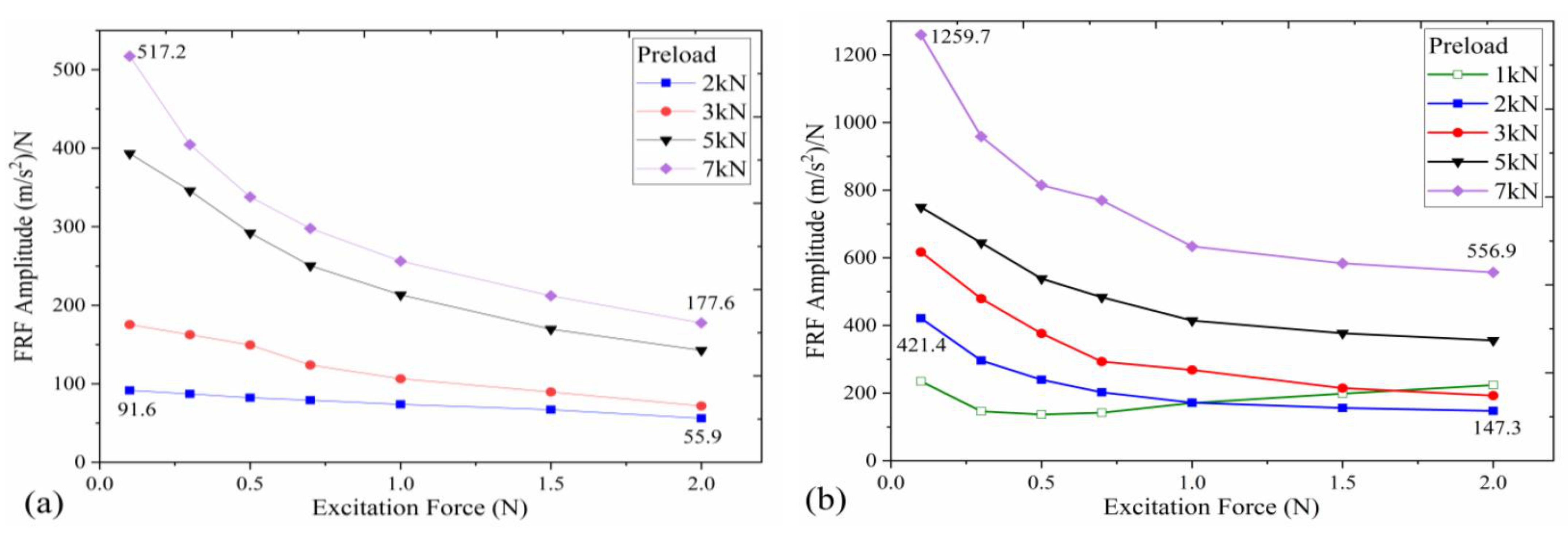

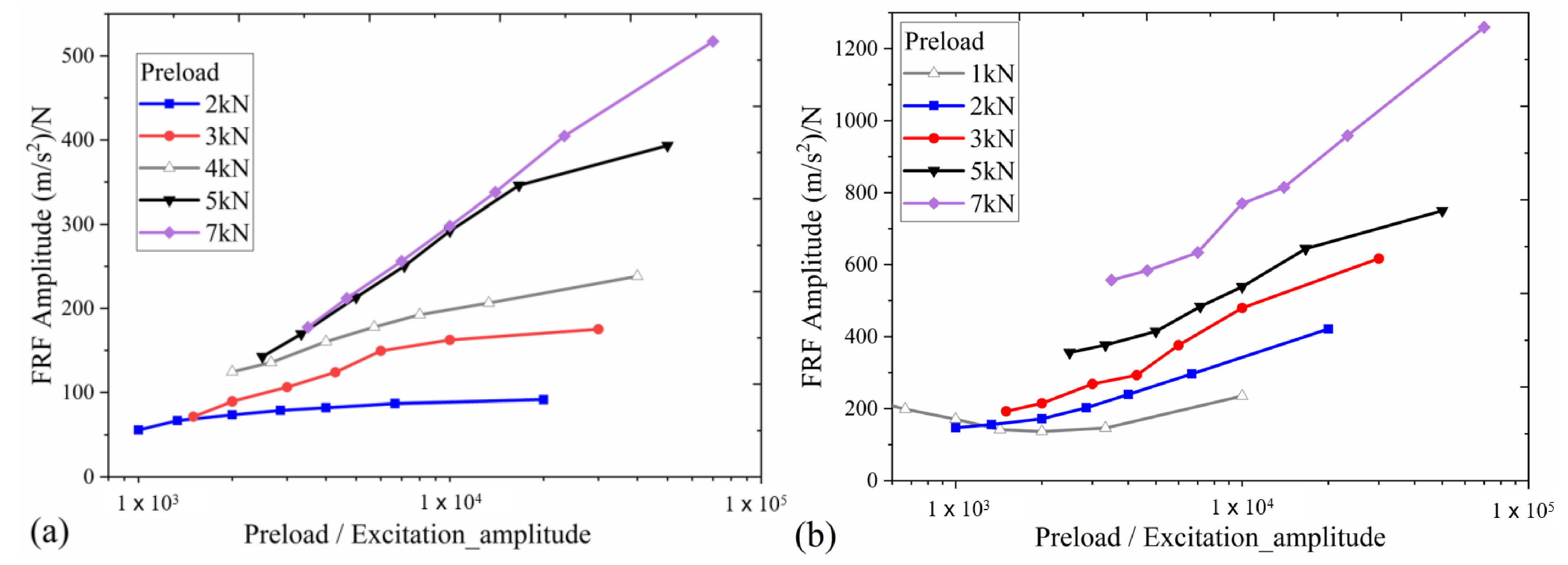

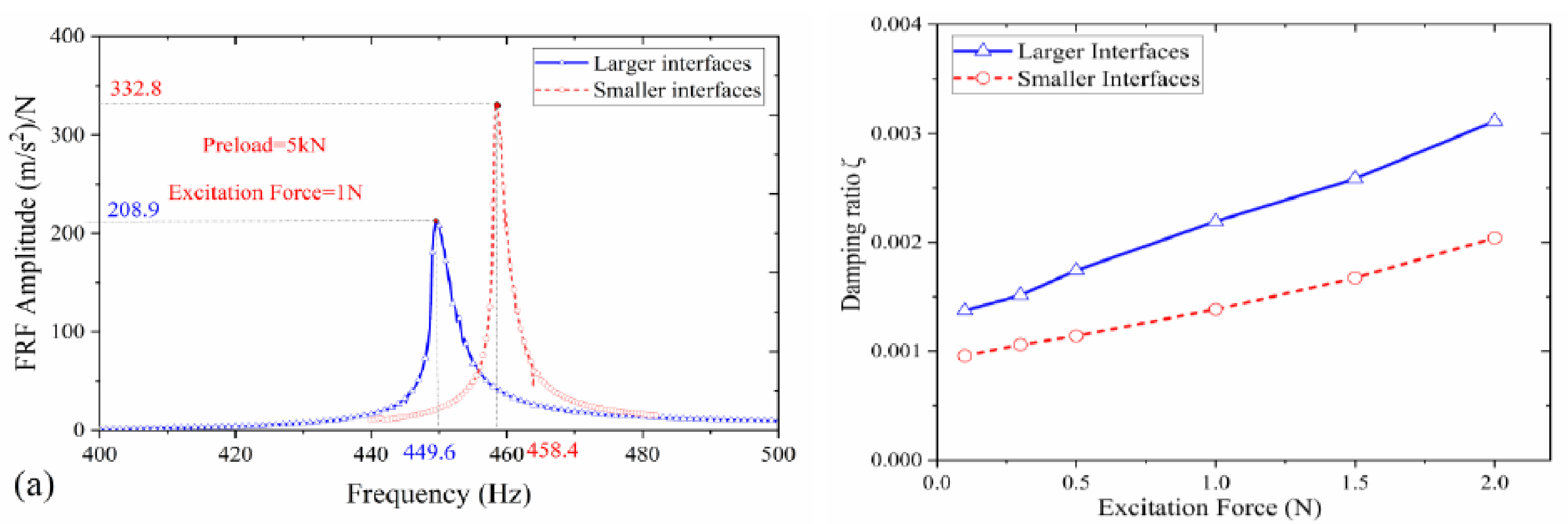
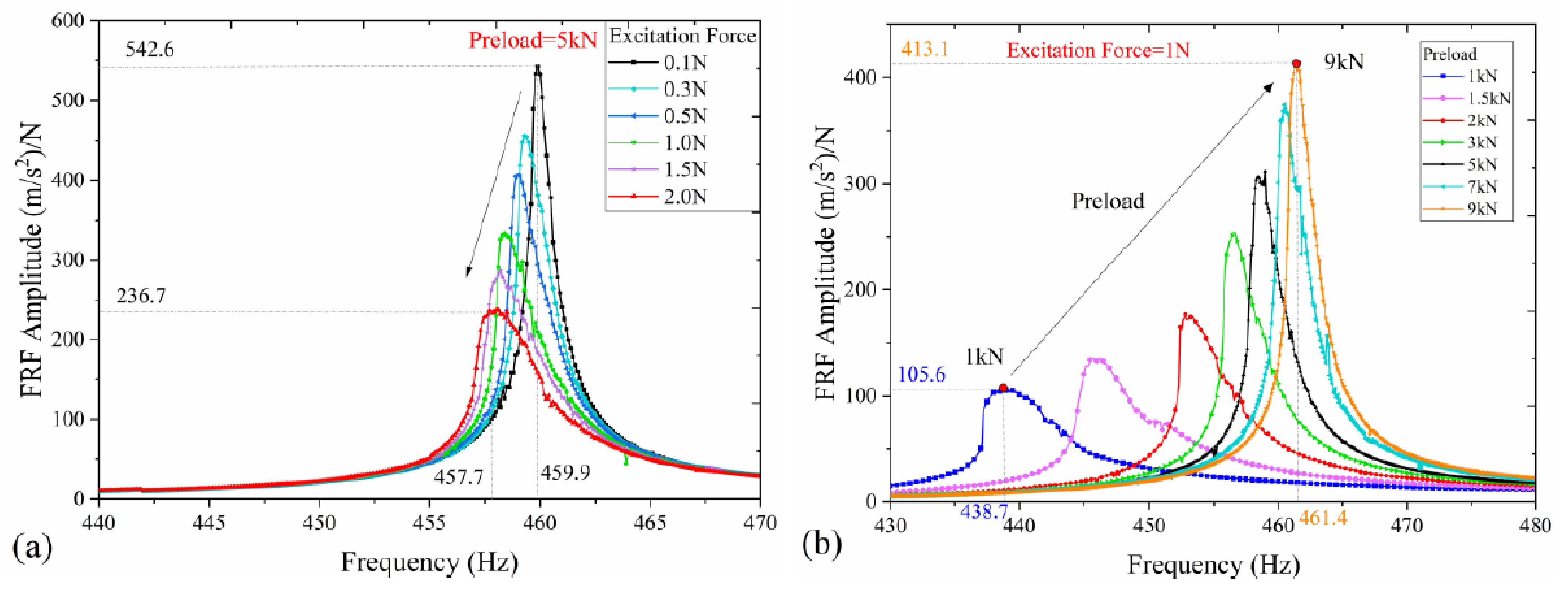
Publisher’s Note: MDPI stays neutral with regard to jurisdictional claims in published maps and institutional affiliations. |
© 2021 by the authors. Licensee MDPI, Basel, Switzerland. This article is an open access article distributed under the terms and conditions of the Creative Commons Attribution (CC BY) license (https://creativecommons.org/licenses/by/4.0/).
Share and Cite
Wang, Y.; Ma, Y.; Hong, J.; Battiato, G.; Firrone, C.M. A Novel Test Rig for the Basic Nonlinear Characterization of Bolted Joints. Appl. Sci. 2021, 11, 5613. https://doi.org/10.3390/app11125613
Wang Y, Ma Y, Hong J, Battiato G, Firrone CM. A Novel Test Rig for the Basic Nonlinear Characterization of Bolted Joints. Applied Sciences. 2021; 11(12):5613. https://doi.org/10.3390/app11125613
Chicago/Turabian StyleWang, Yongfeng, Yanhong Ma, Jie Hong, Giuseppe Battiato, and Christian Maria Firrone. 2021. "A Novel Test Rig for the Basic Nonlinear Characterization of Bolted Joints" Applied Sciences 11, no. 12: 5613. https://doi.org/10.3390/app11125613
APA StyleWang, Y., Ma, Y., Hong, J., Battiato, G., & Firrone, C. M. (2021). A Novel Test Rig for the Basic Nonlinear Characterization of Bolted Joints. Applied Sciences, 11(12), 5613. https://doi.org/10.3390/app11125613







